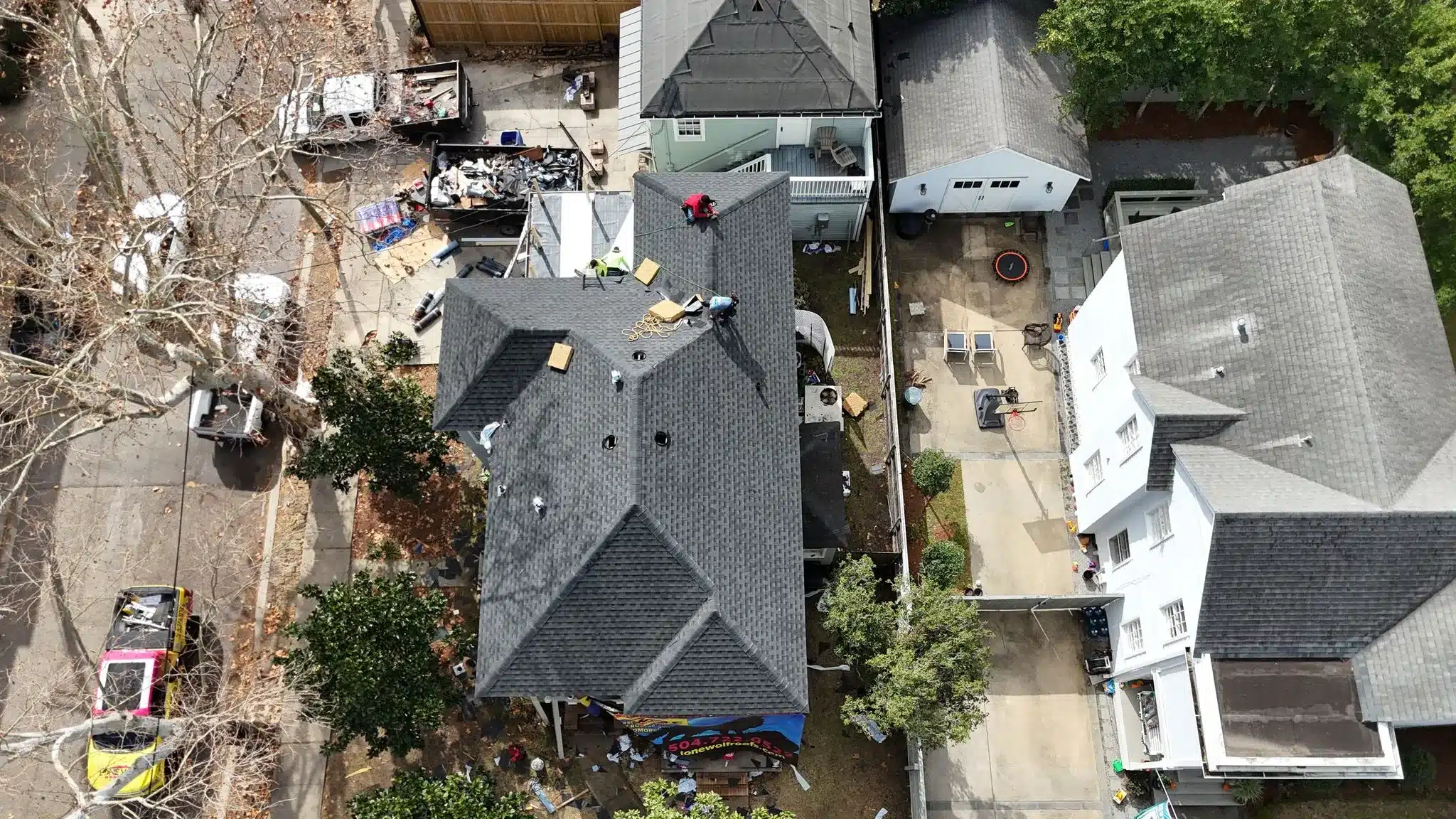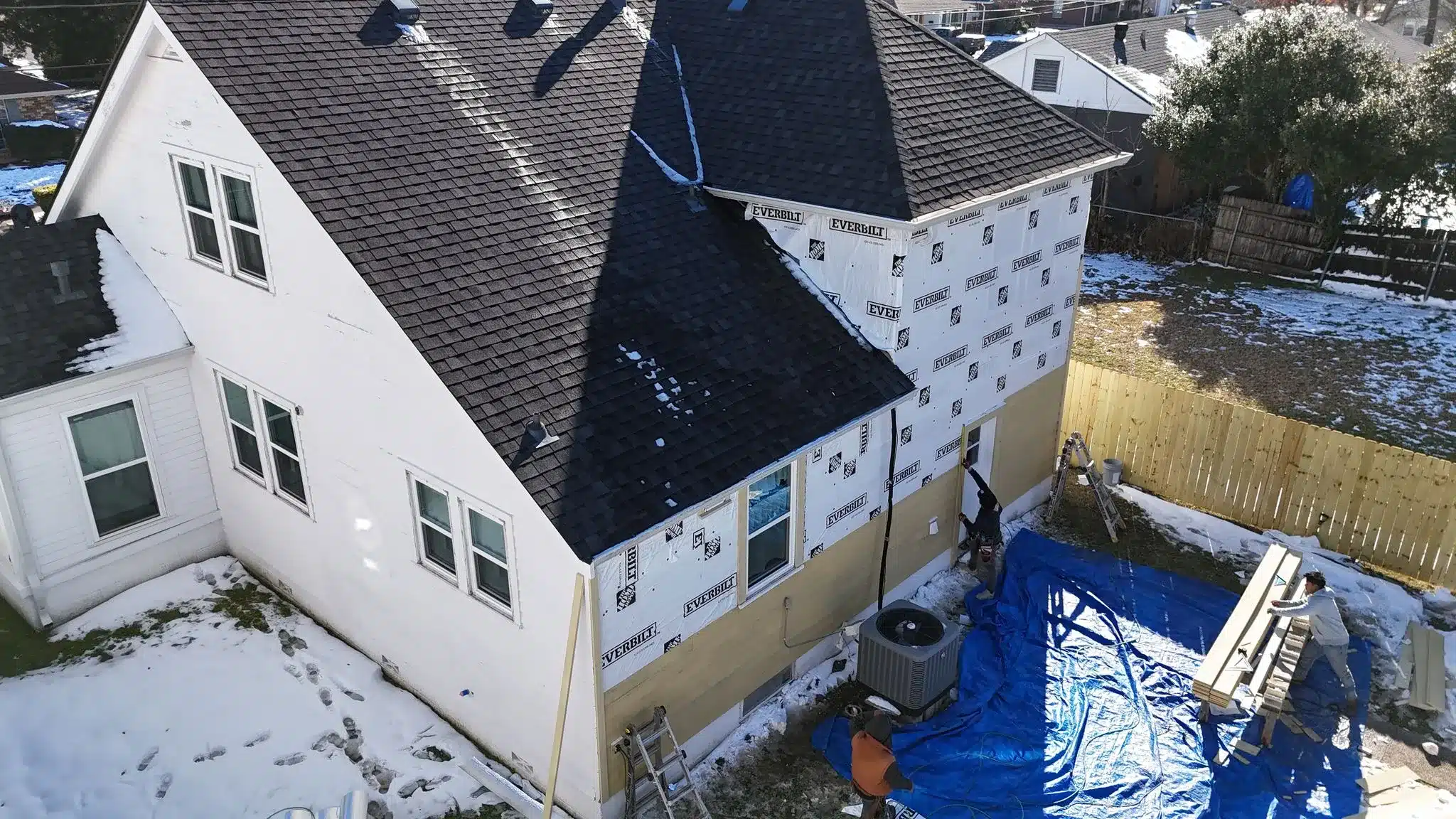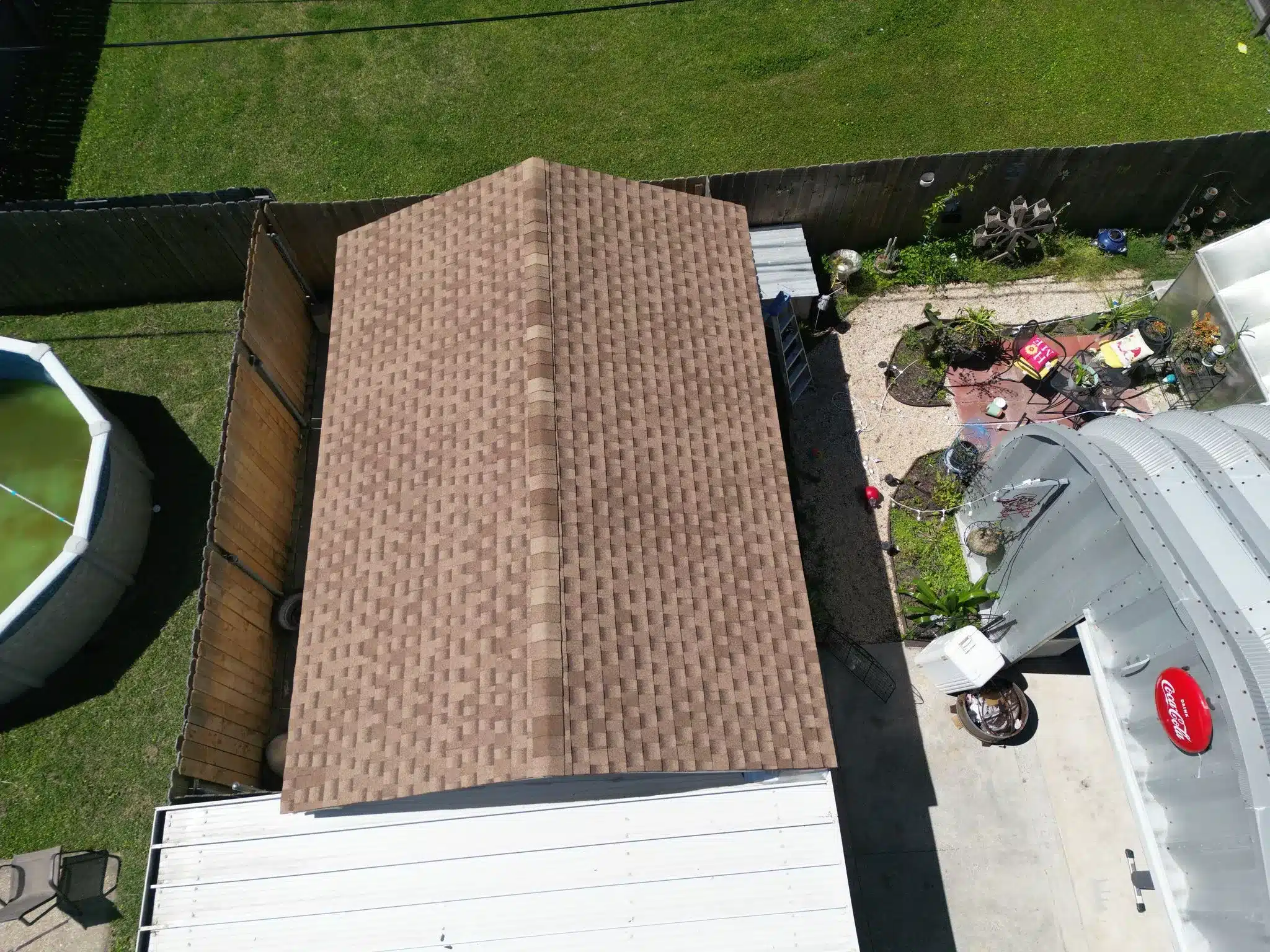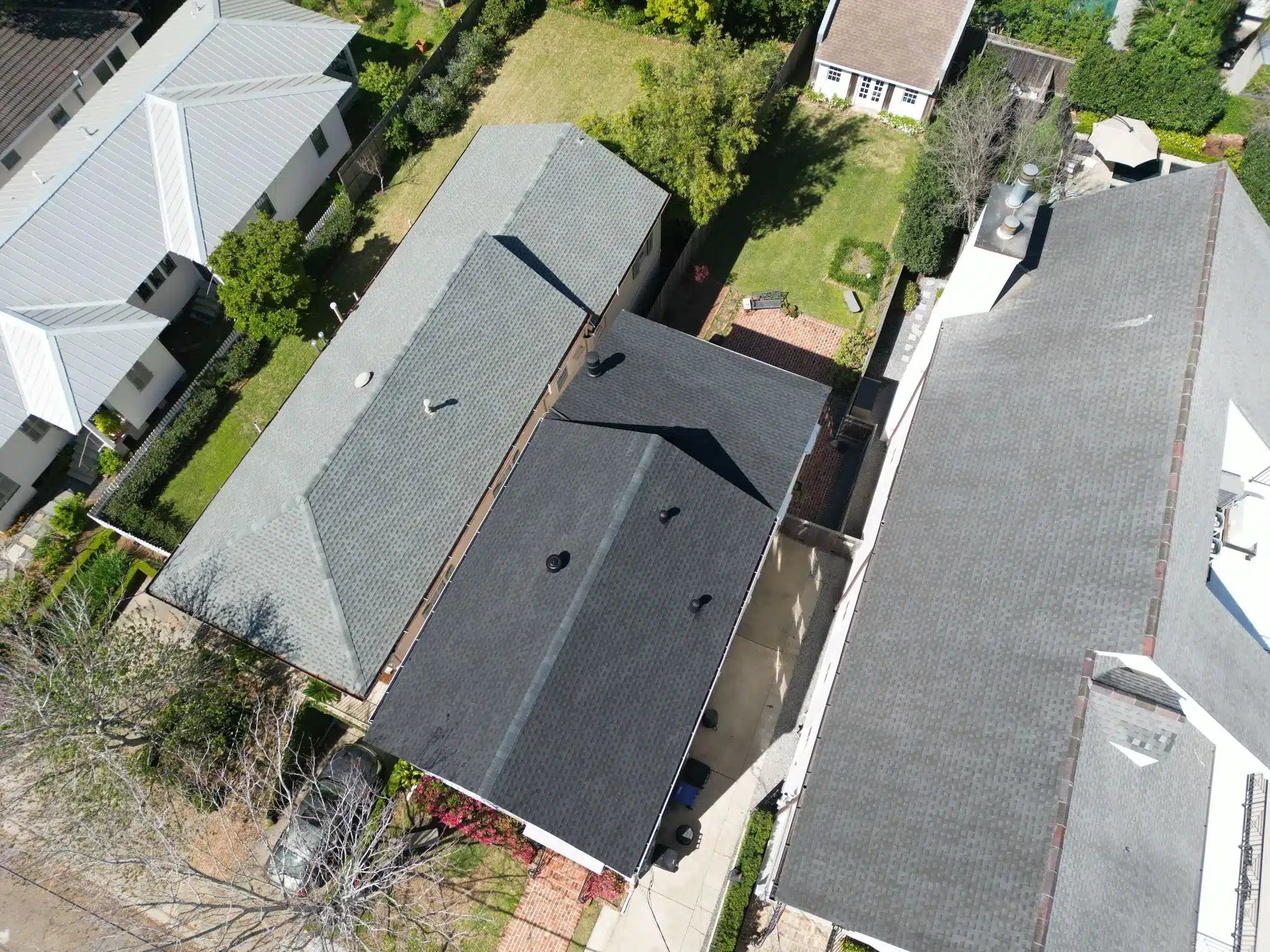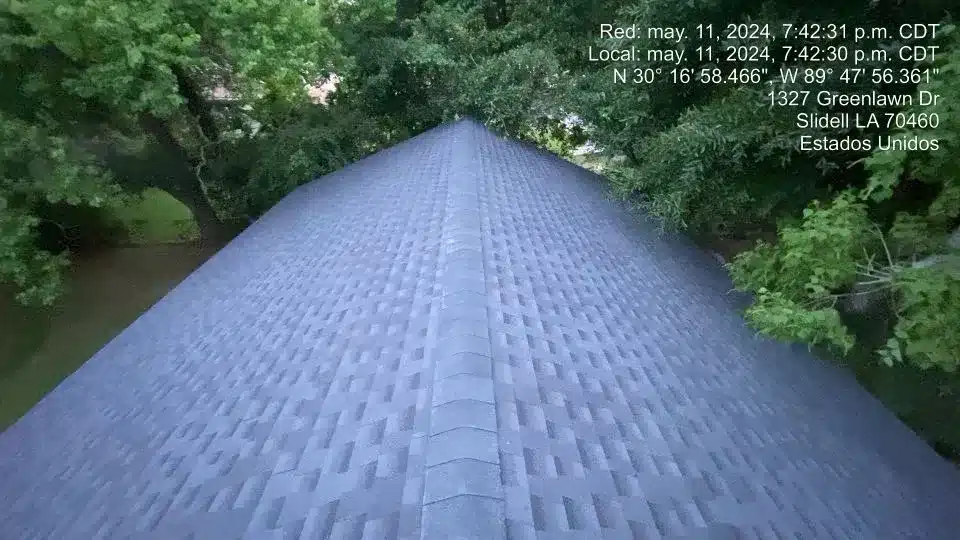Every homeowner prioritizes their roof’s health, and one way to do this is by understanding how to fix roof shingles. Learning a few fundamental repair methods will help you to save money, stop minor problems from turning into big ones, and prolong the life of your roof. Though with the right information you can usually manage little shingle repairs on your own, shingle damage is among the most prevalent roofing issues. This all-inclusive book will help you identify shingle damage indicators, list the tools and supplies you’ll need, and provide the best techniques for carrying out different shingle repairs. You will also discover why Lone Wolf Roofing continues to be a great option for handling more involved or larger tasks, when it is essential to have professional assistance, and how to avoid recurring shingle issues.
Indications Your Roof Shingles Require Repair
You must first identify the early warning signals of difficulty if you are to address issues. Often, curling or buckling shingles point to natural wear or moisture problems. Usually caused by strong winds or falling debris, cracked or broken shingles Missing shingles after a storm also require quick response since they leave your roof deck exposed to the elements. Granules accumulating in your gutters should be watched since they would indicate your shingles could be degrading.
Necessary Materials and Tools for Shingle Repairs
Gather the required tools first to take the first step towards how to fix roof shingles. Roofing nails, a sealer like roofing cement, and replacement shingles that as closely match your current roof will all be required. Removing broken shingles or loosening close by nails with a pry bar or roofing hammer is helpful. Damaged shingles’ ragged edges can be cut off with a utility knife; fresh shingles can be trimmed to size with the same tool. Sealing edges and fissures is made easier by a caulking gun packed with roofing cement. Always have gloves, safety glasses, and a steady ladder since safety should come first. Should you intend to gather debris, put a sheet on the ground under your work area for convenient cleanup. Starting with everything on hand streamlines the repair procedure and enables you to work more effectively.
Substituting a Missing or Damaged Shingle
Begin by finding the exact shingle or shingles that have been damaged. Gently pry the sealant bond on the row of shingles above the one you wish to replace using a pry bar. Avoid cracking or ripping neighboring shingles and work slowly. Shingles are simpler to lift on a warm day, so aim to plan this repair under temperate conditions, about between 50 and 85 degrees Fahrenheit. Remove the nails from the damaged shingle once you have access. Any nails from the row above that pierce the damaged shingle should also be removed since they enable you to slide out the old shingle without more tearing.
Once the old shingle is removed, make sure a new one fits in the vacant area to line up with others surrounding it. To hold the replacement in place, use four roofing nails—one at each corner. Replace any nails you had taken from the row above at this time. At last, put a little roofing cement under the tabs of both the new shingle and the row above it. Press them down to create a tight seal, so avoiding wind uplift or future water incursion.
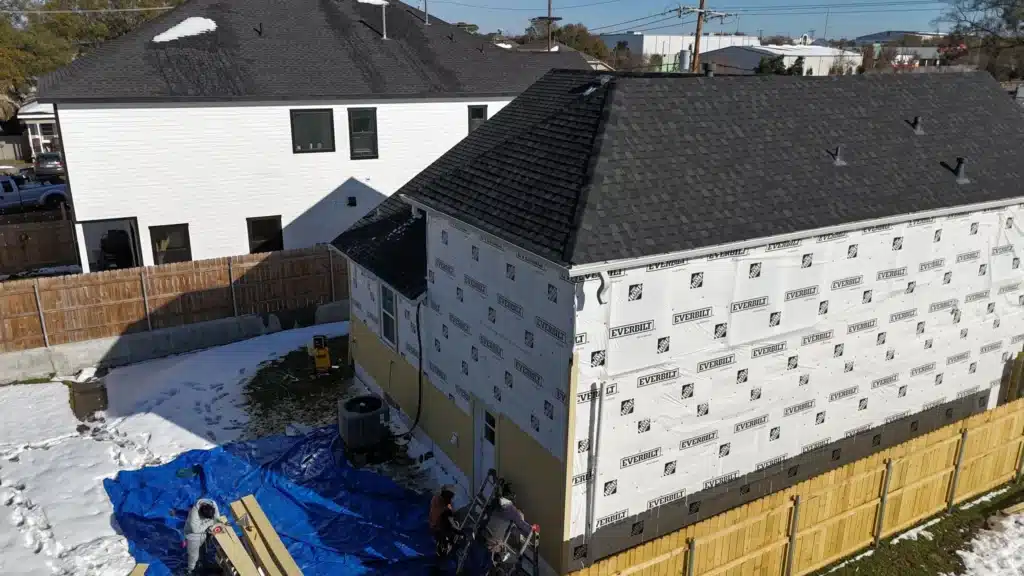
Repairing Buckled or Curled Shingles
Over time, some shingles could curl up at the corners, usually as a result of dampness or aging. Should you catch it early, you may simply fix roof shingles yourself. Carefully raise the curled area, put a little roofing cement or sealer underneath, then push it back into position. Weigh down the shingle with a brick or other comparable heavy item for approximately 24 hours to allow the cement cure correctly if required. Once it dries, the shingle should lay flat again, therefore restoring a protective seal against wind-driven rain.
Sealing a Broken Shingle
Especially after hail storms or when shingles are nearing the end of their service life, little shingle cracks are somewhat typical. Often, though, you can repair these cracks rather than completely replace the shingle, therefore prolonging its utility for a little while. Begin by clearing the area of any dirt or grains. Then put a tiny bead of comparable sealant or roofing cement under the broken shingle. Press the broken areas together and hold them for a few seconds to let first adhesion form. Then, using a putty knife, evenly distribute another layer of sealant over the crack. Sprinkling some loose granules—collected from your gutters or leftover shingles—on top of the wet sealant helps to hide the repair and shield it from UV radiation.
When to Contact a Professional
Though many little problems can be fixed by do-it-yourself remedies, other circumstances call for professional assistance. Should you see extensive damage covering significant areas of the roof, speak with an expert since a complete or partial roof replacement might be required. Structural issues including obvious drooping, water damage to the roof deck, or problems resulting from several shingle layers could also suggest it is time for a professional assessment. Homeowners with very steep or complicated roofs should also give safety first priority. Working on challenging slopes increases the risk of falls and injuries, thus depending on experienced roofers is usually the best option. Trying large-scale repairs without the appropriate tools, knowledge, and safety precautions could cause more harm and greater long-term costs.
Common Questions Regarding Roof Shingle Repair
Many homeowners’ main worry is whether they can only repair a single missing or broken shingle without having to replace the whole roof. Fortunately, individual shingles can certainly be fixed or replaced given the underlying roof deck stays intact and the damage is limited to a small area. How can one also know whether shingles are too old to fix? Depending on the weather and their quality, asphalt shingles can endure anywhere from 15 to 30 years. Advanced curling, bare patches where granules have worn away, and several leaks could indicate the roof’s life is approaching its end. In such situations, patchwork repairs could not be economical.
Any roof repair’s success is also influenced by weather. Cold weather causes shingles to become brittle and prone to shattering under handling. On the other hand, really high temperatures might produce shingles that are too soft. Ideally, you want a dry, mild day. Should you have to do a repair on cold shingles, go carefully and think about using a heat gun on the lowest setting to softly reheat the shingle, increasing its flexibility.
Another common issue is color matching. Shingle products change often, and aged shingles could vary in tone from their initial tint. Select the nearest feasible hue if you can’t locate a precise match. Over time, the new shingles will fade somewhat and be less obvious. Some homeowners move a shingle from a less visible section of the roof to a position that is more prominent view, then use the new shingle in that less visible area, reducing the effect of any color difference.
Addressing Structural or Large-Scale Problems
There can be occasions when a few patch repairs are insufficient, such as when major areas of shingles are missing following a violent storm or you have found water stains inside indicating major breaches. In these situations, you should think about arranging a professional assessment even if you know how to fix roof shingles. Roofers can say if your roof calls for whole replacement, partial re-roofing, or significant strengthening. Although more costly, these significant actions could be required to prevent more water incursion or structural deterioration of your house. Especially if the roof is already near its intended lifetime, trying several short-term remedies may be simply a temporary remedy.
Although learning to fix roof shingles gives you the ability to manage many fundamental issues on your own, there are times when expert assistance provides both convenience and long-term peace of mind. From extensive shingle damage, structural issues, or an aged roof needing a major renovation, Lone Wolf Roofing distinguishes itself as the best answer. From emergency repairs after major storms to full roof replacements customized to your home’s particular needs, their staff excels in all. They also offer clear rates and deadlines to help you decide wisely on your roofing requirements. Working with Lone Wolf Roofing means you are giving your house to a team that prioritizes quality, safety, and customer happiness above all else. We help you to actively preserve the value, comfort, and lifetime of your house, guaranteeing that your roof stays the first line of defense against the elements.

